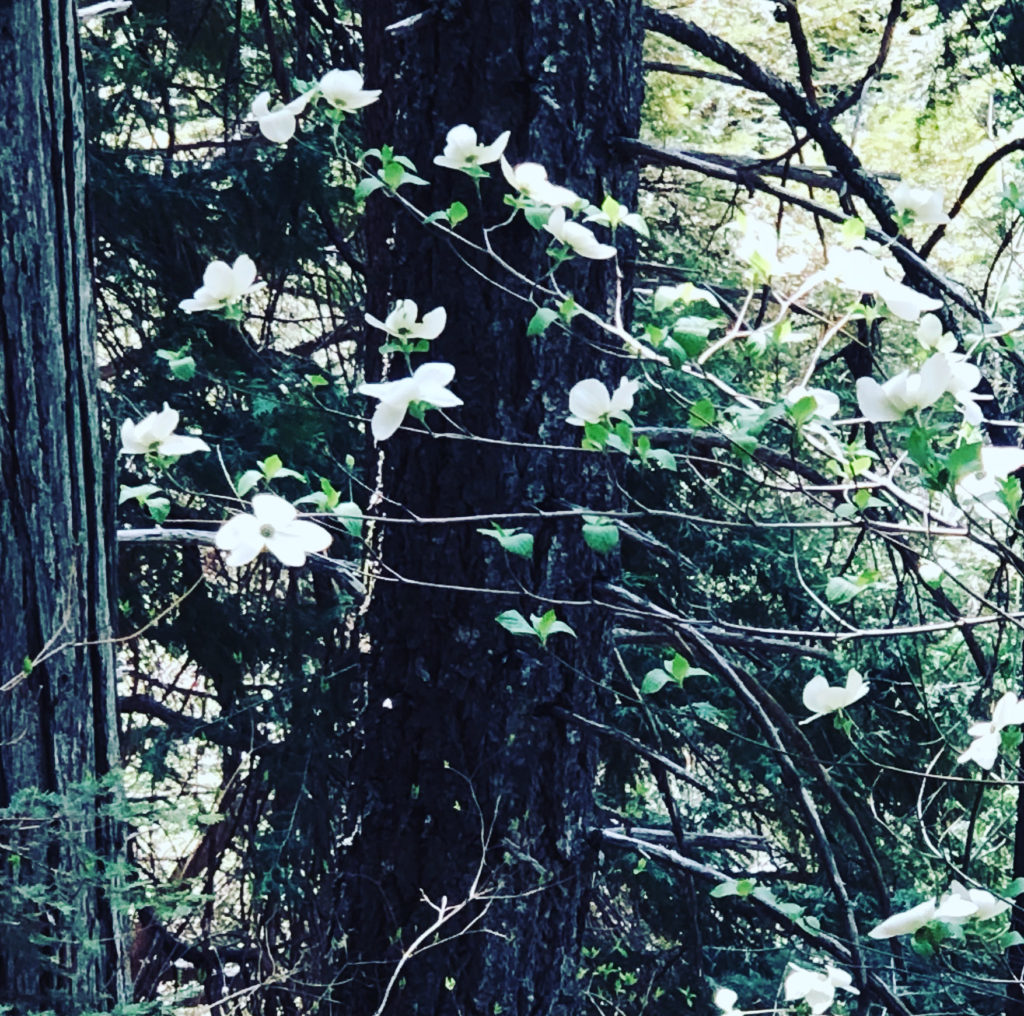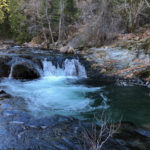The Pacific Dogwoods are going off right now. They are a beautiful reminder that Summer is coming. Get to the mountains this weekend and check them out.
From the US Forest Service:
‘Pacific dogwood is in the Cornaceae (dogwood Family) which contains approximately 12 genera and 100 species distributed primarily through temperate and tropical mountainous regions. Indigenous people used the bark of Pacific dogwood to make a brown dye and a decoction for stomach trouble. Young shoots were often used for weaving baskets. The wood of this species is hard and heavy and has been used commercially to make a wide variety of products including bows, arrows, thread spindles, cabinets, piano keys, mallet handles, and golf club heads. In medieval times, the hard wood of dogwood species was used for making wooden daggers. The brilliant fall colors of the leaves make Pacific dogwood a valuable ornamental. As with its close relative, flowering dogwood, it is susceptible to dogwood anthracnose, a disease caused by the nonnative fungus Discula destructiva. The disease is responsible for the death of some larger trees in the wild and the disease has restricted its Pacific dogwood’s use as an ornamental.
Pacific dogwood is a deciduous tree growing up to 20 meters tall (66 feet) with a smooth dark bark. Leaves are oval, pointed at the tip, 4-10 cm (1.6-3.9 inches) long, deep green in color, and have parallel veins. Flowers occur in tight clusters 1.5-2 cm (0.6-0.8 inches) wide and are subtended by 4-8 conspicuous white bracts 2-7 cm (0.8-2.8 inches) long. Petals are greenish white and often tinged purple. Trees will flower in the spring and often again in the fall. Fruits are bright red and approximately 10 mm (0.4 inches) long.
Distribution is restricted to the Pacific Northwest and California extending from southern British Columbia south through Washington, Idaho and Oregon to California primarily west of the Cascades and Sierra Nevada. It has a relatively low tolerance to frost, a relatively high tolerance to flooding and is moderately shade tolerant. It is common along stream banks in low elevation coniferous, hardwood, and mixed coastal forests. It prefers moist but well drained soils on gentle slopes predominantly below 1500 meters (5000 feet) elevation. It is capable of sprouting from root crowns after fire.
Deer and elk browse young Pacific dogwood sprouts for forage. Small mammals such as deer mice and the red tree vole and birds, including band-tailed pigeons and pileated woodpeckers feed on the fruits.
Cornus nuttallii was named after Thomas Nuttall, an English botanist and zoologist who worked in the United States during the 1800s’




